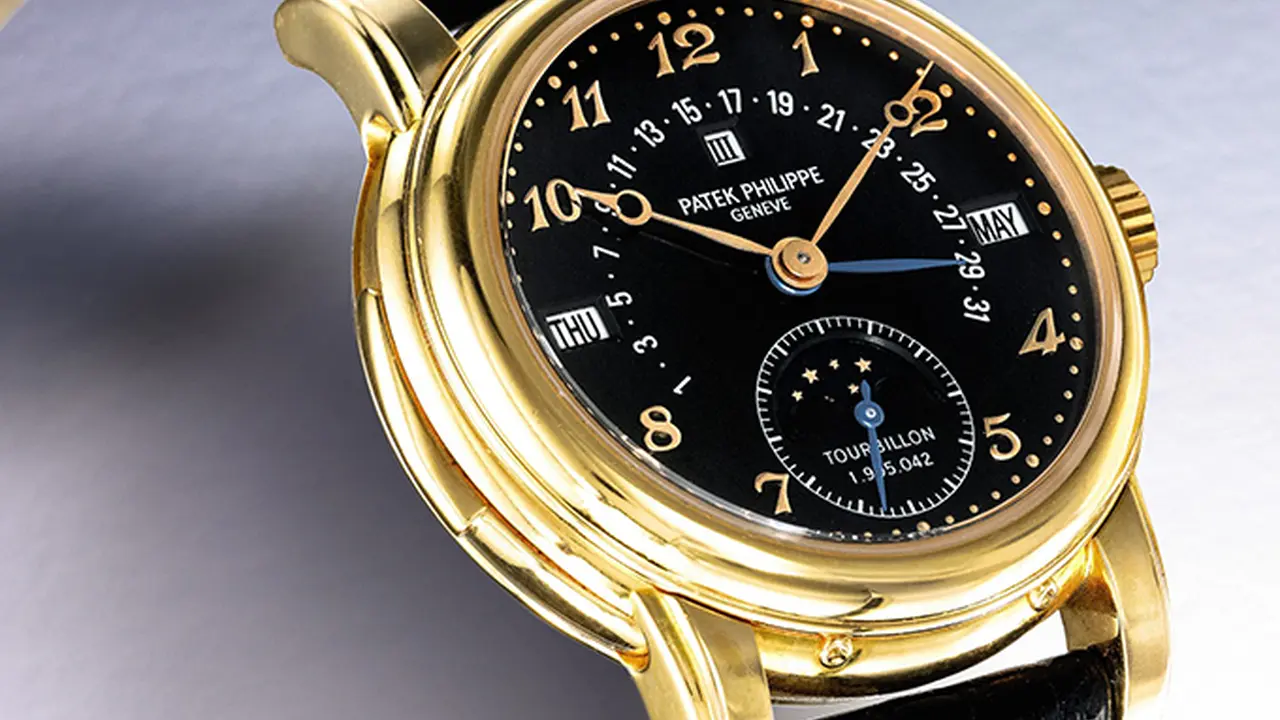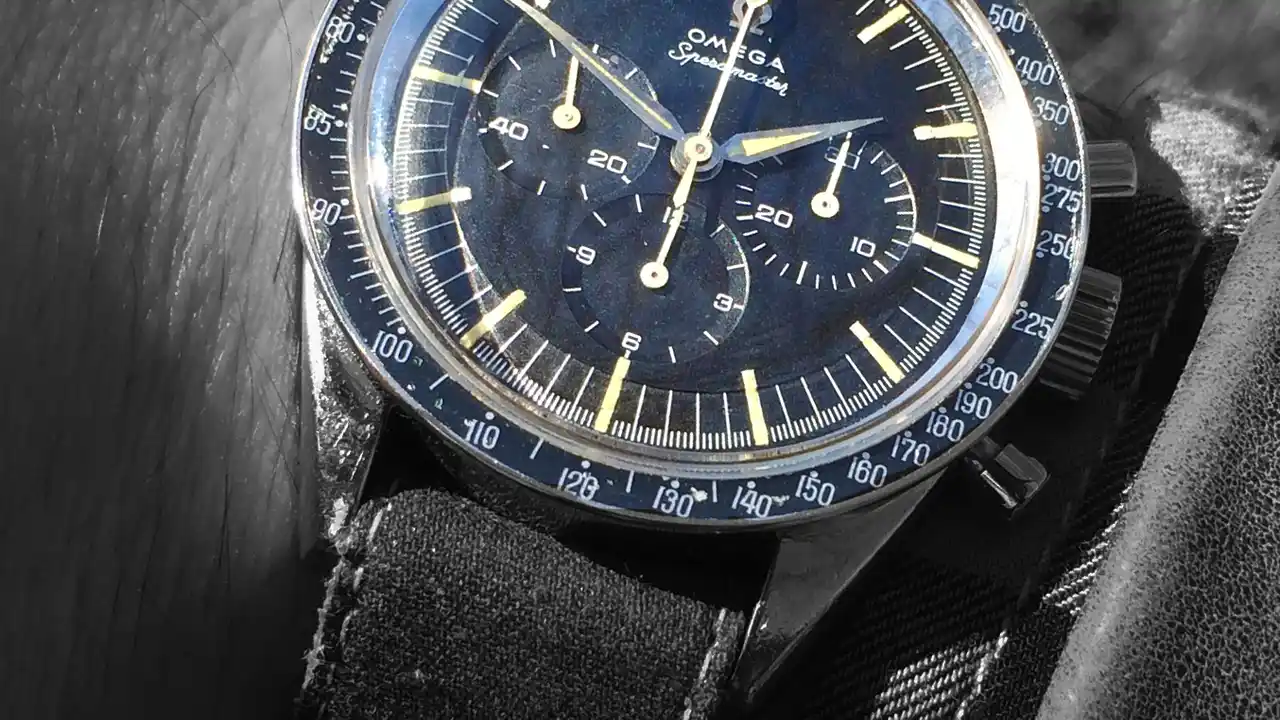Omega Movement Servicing_ A Step-by-Step Guide for Watch Enthusiasts
A step-by-step guide to Omega movement servicing for watch enthusiasts. Learn how to clean, oil, and reassemble your vintage Omega watch.

Understanding the Importance of Vintage Omega Movement Servicing
So, you've got yourself a gorgeous vintage Omega. Congratulations! These timepieces are not just accessories; they're pieces of history. But like any mechanical marvel, they need regular care. Think of it like your classic car – you wouldn't just let it sit in the garage without an oil change, right? The same goes for your Omega. Regular servicing keeps the movement running smoothly, ensures accuracy, and prevents costly repairs down the road.
Tools and Materials for Omega Movement Servicing
Before you dive in, let's gather your tools. You’ll need:
- A clean, well-lit workspace: Seriously, this is crucial. You don't want to lose tiny screws in the carpet.
- Watchmaker's screwdrivers: Get a good set with various sizes.
- Tweezers: Fine-tipped tweezers are essential for handling delicate parts.
- Movement holder: This will keep the movement secure while you work.
- Loupe or magnifying glass: For examining tiny components.
- Cleaning solution: Specifically designed for watch movements.
- Oilers: Different sizes for precise oil application.
- Watch oil: High-quality oil specifically formulated for watch movements. Moebius is a trusted brand.
- Peg wood: For cleaning hard-to-reach areas.
- Lint-free cloths: For wiping surfaces clean.
- Digital camera or smartphone: To document each step (trust me, you'll thank me later).
- Small containers or trays: For organizing parts.
Step-by-Step Guide to Servicing Your Vintage Omega Movement
Step 1 Disassembling the Omega Movement
First, carefully remove the case back and the movement from the case. Document this process with photos! Then, remove the hands using a hand remover tool. Be gentle! Next, take off the dial. Again, be careful not to scratch it. Now, you can start disassembling the movement, layer by layer. Begin with the automatic winding mechanism (if applicable), then the balance wheel, train wheels, and finally, the mainspring. As you remove each part, place it in a labeled container. Seriously, label everything! You don't want to mix up tiny screws.
Step 2 Cleaning the Movement Components
Once everything is disassembled, it's time to clean. Place the parts in a watch cleaning solution. Follow the instructions on the solution. Some solutions require multiple rinses. You can use a watch cleaning machine for this, or you can do it manually with a brush. After cleaning, rinse the parts thoroughly and dry them carefully with a lint-free cloth. Peg wood can be used to clean pivots and other small areas.
Step 3 Inspecting for Wear and Damage
Now, examine each part carefully under a loupe or magnifying glass. Look for signs of wear, damage, or corrosion. Pay close attention to the pivots of the wheels, the teeth of the gears, and the jewels. If you find any damaged parts, you'll need to replace them. Finding replacement parts for vintage Omegas can be challenging, but there are online resources and suppliers that specialize in vintage watch parts.
Step 4 Oiling the Omega Movement
Oiling is crucial for the proper functioning of the movement. Use the correct oil for each specific part. Refer to a lubrication chart for your specific Omega movement. Apply the oil sparingly. Too much oil is just as bad as not enough. Use oilers of different sizes to apply the oil precisely to the correct locations. Common oiling points include the pivots of the wheels, the pallet fork jewels, and the mainspring.
Step 5 Reassembling the Omega Movement
Now, carefully reassemble the movement, following the reverse order of disassembly. Refer to your photos and notes to ensure you put everything back in the right place. Start with the mainspring, then the train wheels, pallet fork, balance wheel, and finally, the automatic winding mechanism (if applicable). Make sure each part is properly seated and secured.
Step 6 Regulating the Timing
After reassembly, you'll need to regulate the timing of the watch. This involves adjusting the balance wheel to ensure that the watch keeps accurate time. You can use a timing machine for this, or you can do it by ear. Adjust the regulator lever until the watch is running within acceptable tolerances. This may take some trial and error.
Step 7 Casing and Final Checks
Once the movement is running smoothly and keeping accurate time, carefully re-case it. Make sure the dial and hands are properly aligned. Replace the case back and check the seals. Finally, give the watch a good cleaning and admire your handiwork!
Recommended Vintage Omega Models for Servicing Practice
Want to practice your servicing skills? Here are a few recommended vintage Omega models that are relatively common and have well-documented movements:
- Omega Seamaster Caliber 562: A robust and reliable movement, perfect for beginners. These models are readily available and often affordable. Expect to pay between $300-$800 depending on condition.
- Omega Geneve Caliber 601: Another excellent choice for beginners. The Caliber 601 is a simple and elegant movement that is easy to work on. Expect to pay between $200-$600 depending on condition.
- Omega Constellation Caliber 564: A slightly more complex movement, but still manageable for intermediate enthusiasts. These models are known for their accuracy and chronometer certification. Expect to pay between $500-$1500 depending on condition.
Comparing Different Omega Movements for Servicing Difficulty
Some Omega movements are easier to service than others. Generally, simpler movements with fewer complications are easier to work on. For example, a manual-winding movement will be easier to service than an automatic movement with a chronograph function. The complexity of the escapement and the presence of delicate components also affect the difficulty level. Do your research before tackling a particular movement. There are many online resources and forums where you can find information and advice.
Where to Find Vintage Omega Parts and Resources
Finding replacement parts for vintage Omegas can be a challenge, but there are several online resources and suppliers that specialize in vintage watch parts:
- eBay: A good place to find used parts and complete movements.
- CousinsUK: A reputable supplier of watch parts and tools.
- Otto Frei: Another reputable supplier of watch parts and tools.
- Watch forums: Online watch forums are a great resource for finding information, advice, and even parts.
Remember to always exercise caution when buying parts online. Check the seller's feedback and reputation before making a purchase. Ask questions and request detailed photos of the parts.
The Satisfaction of Servicing Your Own Vintage Omega
Servicing your own vintage Omega can be a challenging but rewarding experience. It's a great way to learn about the inner workings of these mechanical marvels and to appreciate the craftsmanship that goes into them. Plus, there's nothing quite like the feeling of bringing a vintage timepiece back to life with your own hands. So, grab your tools, do your research, and get ready to embark on a fascinating journey into the world of vintage Omega movement servicing!
:max_bytes(150000):strip_icc()/277019-baked-pork-chops-with-cream-of-mushroom-soup-DDMFS-beauty-4x3-BG-7505-5762b731cf30447d9cbbbbbf387beafa.jpg)





